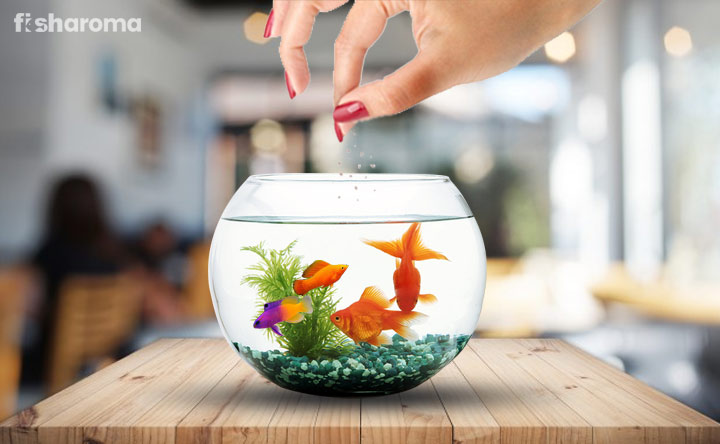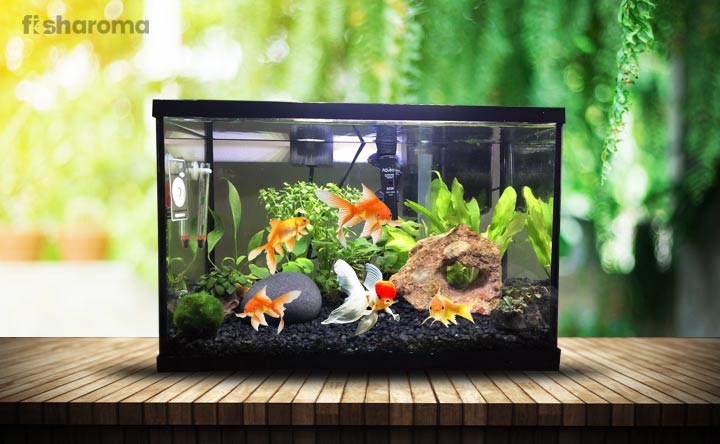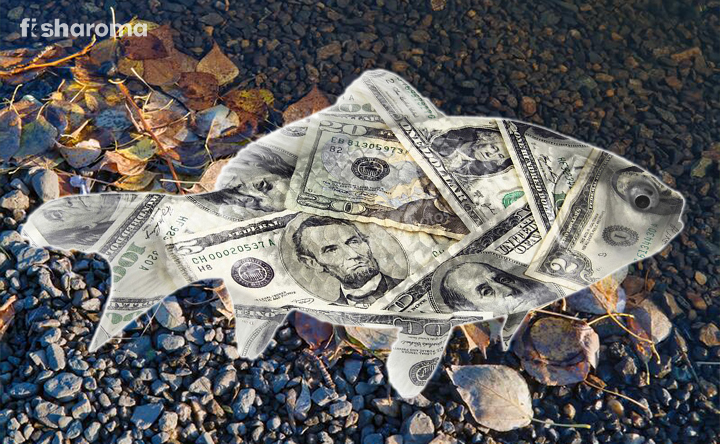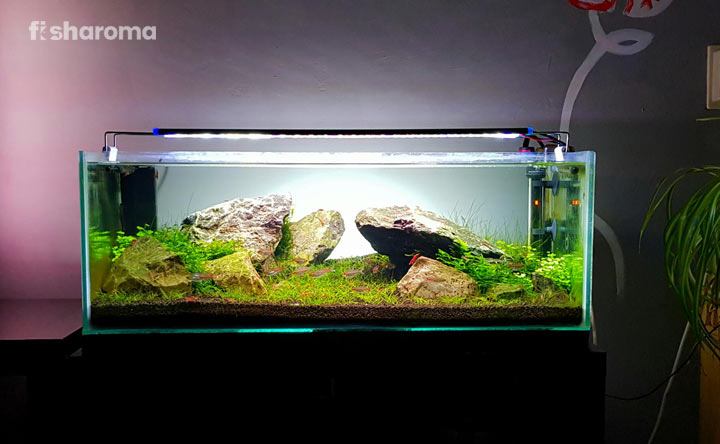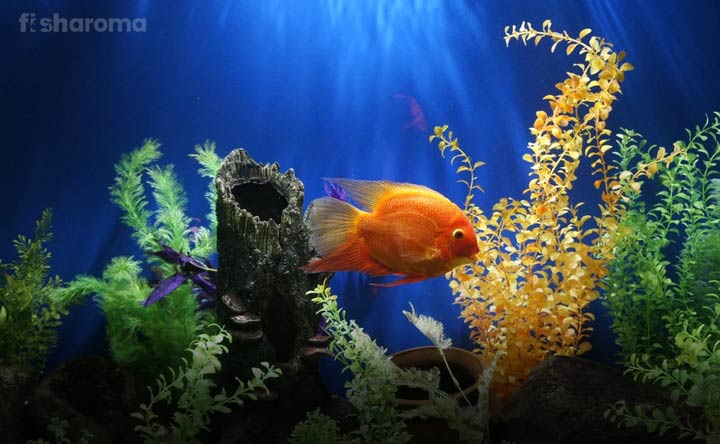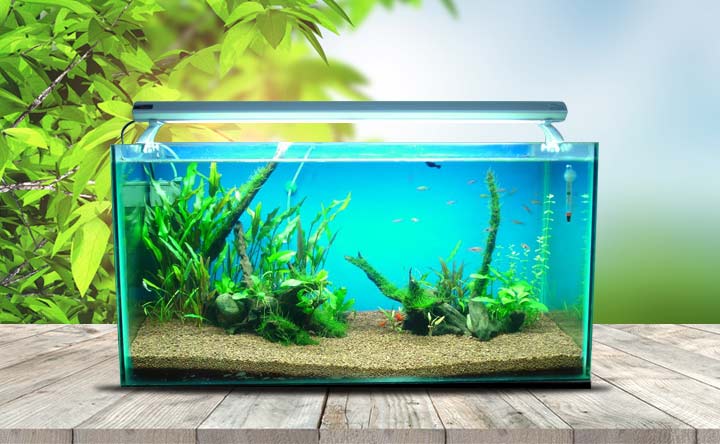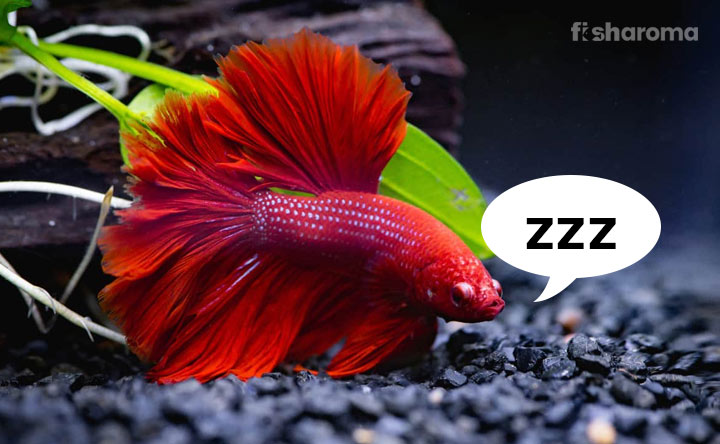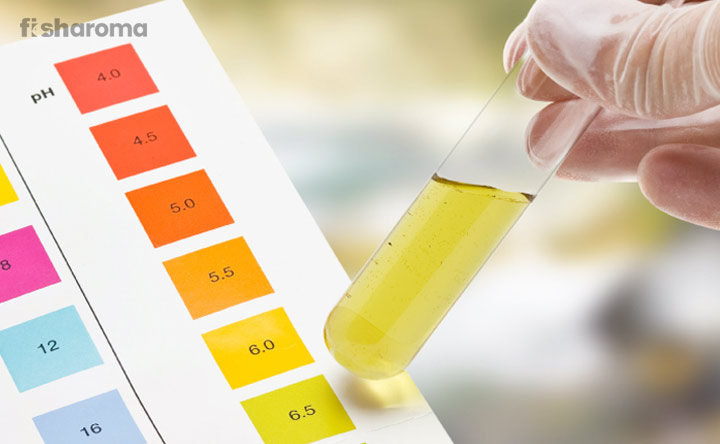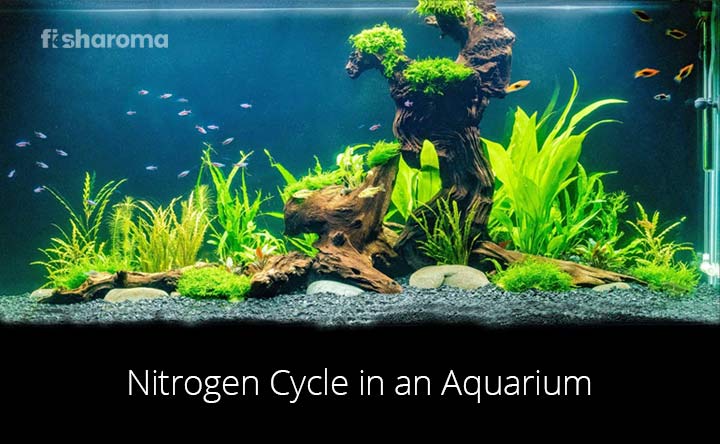7 Best Substrates for Planted Tanks: A Constructive Review & Buying Guide
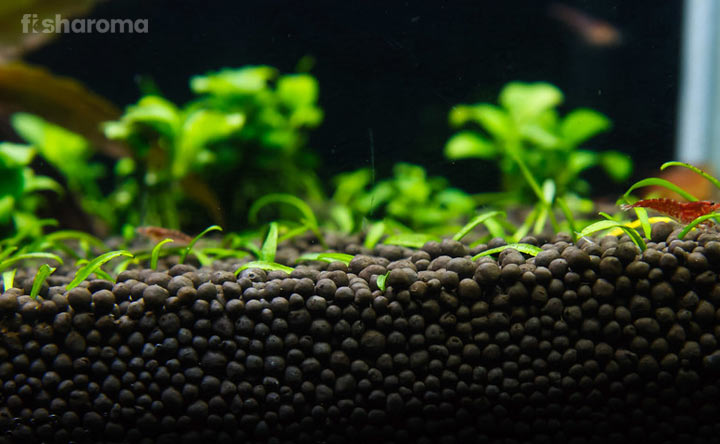
- Factors to Consider Before Deciding on a Substrate for Your Planted Tank
- Types of Substrate
- 7 Best Substrates for Planted Tanks That Will Help Your Aquatic Plant Grow Healthily
- CaribSea Eco-Complete Planted Black Aquarium Substrate
- ADA Aqua Soil Amazonia
- Fluval Plant and Shrimp Stratum
- Seachem Flourite Black Clay Gravel Aquarium Substrate
- Mr. Aqua Habitat Water Plant Soil
- Spectrastone Premium Aquarium Gravel
- CaribSea ACS00832 Peace River Gravel for Aquarium
- Final Verdict
Whether they are aquatic or land-based, most plants need a surface for penetrating their roots. And this is where the substrate comes into play. It refers to the layer of material that sits at the bottom of your tank. From serving as the base for holding plants to supplying nutrients to them, from serving as hiding spots for fish to replicating their natural environment in an aquarium, the benefits of a substrate are multi-fold. So, it is crucial that you pay attention to the substrate you use in your tank. To help you pick the right one, we are listing out the reviews of the best substrates for planted tanks along with the factors that you need to know before buying them.
Factors to Consider Before Deciding on a Substrate for Your Planted Tank
You just can’t go on a whim and buy whatever substrate that you lay your hands on. A bunch of factors has to be considered while making your decision. They are as follows:
Nutrition Level
Substrates serve as the primary source of nutrients for your plants. The dosage of nutrients required by plants varies from species to species. Therefore, research on the nutrient need of your plant before settling on a particular type of substrate.
Substrates act as the home ground for beneficial bacteria to live that are responsible for maintaining the ecosystem of the tank. These bacteria help eradicate waste materials such as uneaten food, fish waste, plant debris, among others from a tank.
Water Type
The parameters of water in your tank are dictated by the kind of plants and/or pets you keep. The reaction of water to substrate varies from type to type, and they have the potential to alter the chemistry and ecological balance inside the tank. Thus, you need to make sure that you understand how your substrate reacts to the temperature, hardness, pH level, and mineral content of your water.
Tank Inhabitants
This factor is especially true for bottom-dwelling pets that spend the vast majority of their time scavenging at the bottom of the tank. Using the wrong type of substrate can lead to allergic reactions in your aquatic pets and plants. So, before making your purchase, consult with your veterinarian or pet supplier as to which substrate should you go for your tank.
Although colored substrate looks aesthetically pleasing, most of them contain harmful artificial coating on them which toxifies the tank water. So, try to avoid them as much as you can.
Types of Substrate
Substrates can be of varied types depending upon their texture. It’s time to find about them in detail.
Aquarium Sand
Probably the most popular substrate out there, it is recommended for fish that often dig and bury themselves. It is available in a wide range of grain sizes that range from fine particles to coarse. In addition, they come in various bright colors. It is also very easy to clean this type of substrate.
The downside with them is that they can cloud your tank water if it is stirred too much. So, if you are hosting any fish that are notorious for such activities, try to avoid these substrates.
Coral Sand
A mix between sand and gravel, this type of substrate dissolves in the water with the passage of time, thereby increasing the pH level of your tank water. Made of calcium carbonate, it acts as a counterbalance to acid build-up and helps put an end to decaying of organic matter in the tank.
Gravel
Available in varied sizes and colors, gravels are basically pebbles. They are extremely easy to clean. Fine gravel pieces help aquatic plants in developing a good root system. Just make sure your gravel doesn’t have any sharp edges to them.
Marbles
Ideal for breeding tanks since the gaps between them helps protect fish eggs; the marbles that need to be used for aquariums are spherical and flat in shape.
Speaking of marble chippings, they resemble coral sand but have a higher percentage of calcium carbonate in them. Their porous nature helps them to filter the tank water.
Soil
Probably the most nutrient-rich substrate that you can get your hands on, soil helps in building a strong root system for your aquatic plants. They are tightly packed and they contribute to the natural circulation of the tank water.
Many aquarists prefer keeping a multi-substrate setup in their tanks in order to replicate the natural environment of their aquatic plants. This consists of a bottom layer of sand, a middle layer of soil, and a top layer of gravel.
7 Best Substrates for Planted Tanks That Will Help Your Aquatic Plant Grow Healthily
Now that you have a better grasp on the types of substrate, it’s time to list out the best among them. We searched online, did our market research, and spoke to aquarium experts before whittling down our choice to these following products:
CaribSea Eco-Complete Planted Black Aquarium Substrate
Made of basaltic volcanic soil, the CaribSea Eco-Complete Planted Black Aquarium Substrate is rich in magnesium, calcium, potassium sulfur, iron, and 25 other nutrients. You don’t have to worry about adding any additional laterites if you use this product.
To help in cycling out the water, this 20 lbs. product creates a biological balance inside the tank. In addition, it contains heterotrophic bacteria that help convert fish waste into organic matter. It also won’t cloud your tank water and you don’t have to rinse it before adding it to the tank. Besides, it is completely free of dyes, artificial chemicals, and any other additives.
Its porous nature helps in filtering the water without jeopardizing the water circulation. Black in color, it creates a great contrast to the vivid greenery of your tank. It can be used as a top layer or a bottom layer substrate.
What We Like
- Suited for both existing and new tanks
- No need to rinse the substrate beforehand
- Recommended for heavily planted trees
- Acts as a filter for your tank water
- Hosts beneficial bacteria
- Rich in nutrients
- Budget-friendly
What We Don’t Like
- Makes the water alkaline
- Not suited for saltwater tanks
ADA Aqua Soil Amazonia
Suited for tanks that have a diverse group of aquatic plants, the ADA Aqua Soil Amazonia is made of Japanese plant-based black soil that is derived from decomposed leaves. It also helps in bringing down the pH level and lowering the hardness of your tank water.
This 20 lbs. product is an excellent option for those who want a luscious carpet of grass in their tank. Since its grain size is extremely small, it helps your plants anchor themselves easily to the substrate. It also helps them grow a healthy root system.
The light color of this product mimics the natural environment of the tank. It can be used as a bottom layer of any substrate.
What We Like
- Helps in lowering the pH level
- Helps in softening the water
- Consistent powder promotes root growth
- Made of completely natural product
- Natural appearance
- It can be sued both as a standalone substrate and as part of a multi-layer substrate
- Recommended for tanks with a diverse group of plants
What We Don’t Like
- Can lead to an ammonia spike
- Expensive
Fluval Plant and Shrimp Stratum
If you are one of those who love hosting shrimps in their planted tanks, then Fluval Plant and Shrimp Stratum is what you need to get your hands on. Available in three size variants – 4.4 lbs., 8.8 lbs., and 17.6 lbs., this substrate is made of mineral-rich organic volcanic soil.
One of the best aspects of this light-colored substrate is that it promotes the growth of nitrifying bacteria that helps in maintaining an optimal level of the quality of your tank water. It also helps in strengthening the roots of your plants.
This gravel-like substrate keeps the pH level of your tank water neutral to mildly acidic. Besides, it also serves as hiding spots for your shrimps.
What We Like
- Rich in minerals
- Rich in nutrients
- Porous
- Helps maintain the tank water neutral to slightly acidic
What We Don’t Like
- Can cloud the tank water if stirred
- Lightweight can be accidentally displaced by a suction cup
- Expensive
Seachem Flourite Black Clay Gravel Aquarium Substrate
Available in a wide variety of colors, the Seachem Flourite Black Clay Gravel Aquarium Substrate promotes filtration of your tank water. Since the gravels are uniquely shaped and are different from one another, it contributes to the aesthetics of your tank.
Free from any chemical impurities, you don’t have to use any additional laterites when dealing with this product since it can be used as a standalone substrate.
Probably, the best part of this substrate is its durability. With this in your tank, you don’t have to worry about replacing it since it has the potential to stay effective for a very long period of time.
We strongly recommend you to rinse the Seachem Flourite Black Clay Gravel Aquarium Substrate before adding it to your planted tank; else chances of your tank water getting discolored will be high.
What We Like
- Can be used as a stand-alone substrate
- Long-shelf life
- Porous
- Doesn’t alter the water parameters
- Rich in nutrients
- Organic
What We Don’t Like
- Can cloud the tank water if stirred
- Not suitable for plants with delicate roots
- Sharp edges pose a threat to the aquatic pets
Mr. Aqua Habitat Water Plant Soil
Highly rich in nutrients, Mr. Aqua Habitat Water Plant Soil helps in the growth of beneficial bacteria in your tank. It will also help in lowering the pH level of your tank water.
Additionally, you don’t even have to worry about treating your water frequently when you use this 1.85 lbs. product. Remember, it can be very dusty when you take it out of the packet for the first time. As a result, when you pour it in your tank, the water will be cloudy. But don’t freak out, since it will soon sink down and the water will clear on its own.
This black-colored substrate acts as a perfect bottom layer in a multi-substrate setup. Its a great option for smoothly sinking the roots of your aquatic plants because of its porous granular structure.
What We Like
- Helps in lowering the pH level of your tank water
- Promotes the healthy growth of plant roots
- Rich in nutrients
What We Don’t Like
- Packed in small quantity
- Expensive
- Can discolor the tank water for a couple of hours when introduced for the first time
Spectrastone Premium Aquarium Gravel
Ideal for small tanks due to its small gravel size, the Spectrastone Premium Aquarium Gravel is one of the most popular non-toxic freshwater aquarium substrates available in the market today. Coming with a wide spectrum of colors, the pebbles are of varied sizes which contribute to the aesthetics of your tank.
Extremely budget-friendly by nature, you can use this for your houseplants and succulents as well. This nutrient-rich substrate has a non-toxic coating that is a great boon for your aquatic plants and pets alike.
This 5 lbs. product also doesn’t affect the pH level of your tank. So, you don’t have to worry about the parameters of your tank water getting influenced by it.
What We Like
- Non-toxic coating
- Budget-friendly
- Variety in shapes and colors
- Doesn’t affect the pH level of the tank water
- Aesthetically pleasing
- Recommended for small tanks
What We Don’t Like
- Needs to be rinsed before introducing to the tank
- Rough texture
CaribSea ASC00832 Peace River Gravel for Aquarium
Known for creating a natural ambiance in your tank, the CaribSea ASC00832 Peace River Gravel for Aquarium is a fine-grained substrate that ensures that there is no toxic build-up inside your tanks. Evident from its name, it gives a riveresque look to your tank.
An added benefit of this 20 lbs. product is that it doesn’t affect the pH level of your tank. So, if you are one of those who are fussy about sudden changes in the water parameters of their aquarium owing to the safety of your aquatic pets and plants, this is a great pick for you.
It allows for the plants to firmly root in them and the size of the gravels calls for a nice flow in the water, which creates quite a visual spectacle in your tank. Highly rich in nutrients, it won’t allow any harmful chemicals to build inside the tank.
What We Like
- Doesn’t use any dyes or paints
- Doesn’t affect the pH level
- Creates a natural look in the tank
- Budget-friendly
What We Don’t Like
- Can cloud the tank water if stirred
- The color can be viewed as bland by some
Final Verdict
The substrate of your aquarium is the base on which the lives of your rooted plants depend on. To consider it just as a decorative item would be a mistake. From providing nutrients to your plants to contributing to the filtration and the circulation of the tank water, they play a pivotal role in ensuring the health of your aquatic plants.
Beautifying your tank is, of course, important; but don’t prioritize it to a point where it will result in creating a toxic environment in your tank.
Therefore, go thorough research as to which type of aquarium base is suited for your plants and then go on to pick the best substrate for your planted tank. Don’t forget to evaluate the pros and cons of each of them before making your final choice.
We, from Fisharoma, wish you good luck with your aquascaping!
Similar Fishkeeping Guides
- Best Aquarium Heaters: Maintaining the right temperature of the tank water is crucial for the health of your fish. So, let us help you make the right decision in buying the best aquarium heater with our guide.
- Best Aquarium Stands: Stands are the base on which the life of your aquatic pets rests on. So, buying a sturdy one is very important here. Take a look at our extensive reviews of the best aquarium stands available in the market.
- Best Reef Aquarium LED Lights: Not only for decorative purposes but LED lights also contribute towards the growth of corals in your reef aquarium. So, get your research from our guide as to which one to buy among the numerous ones available.

